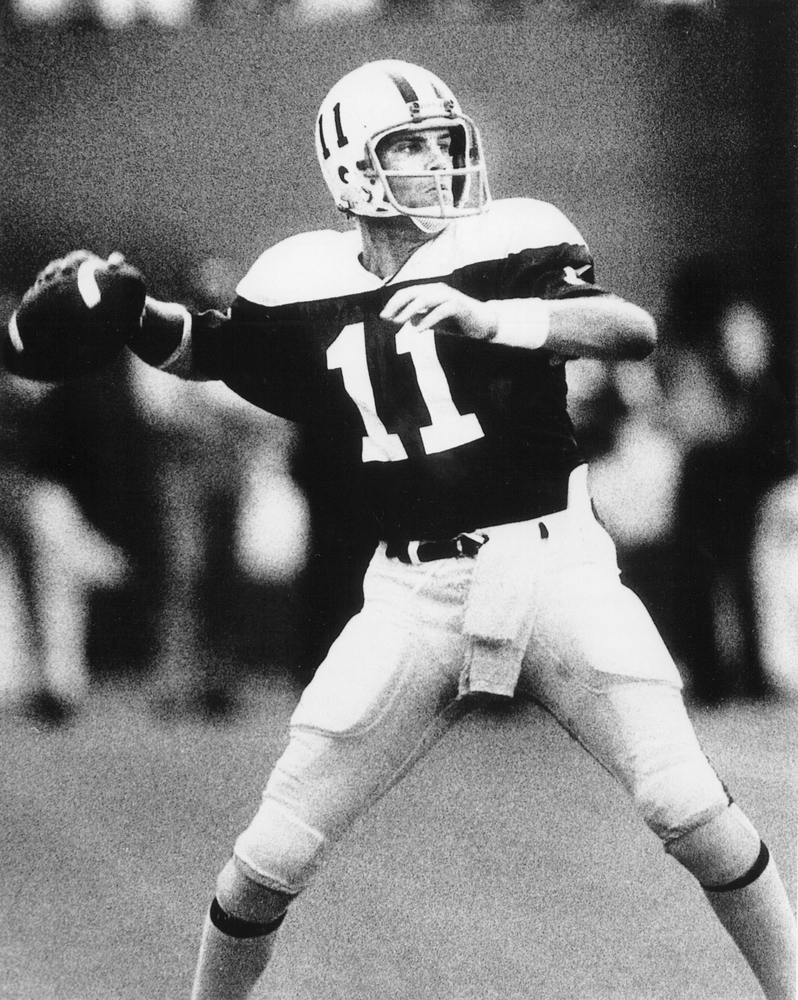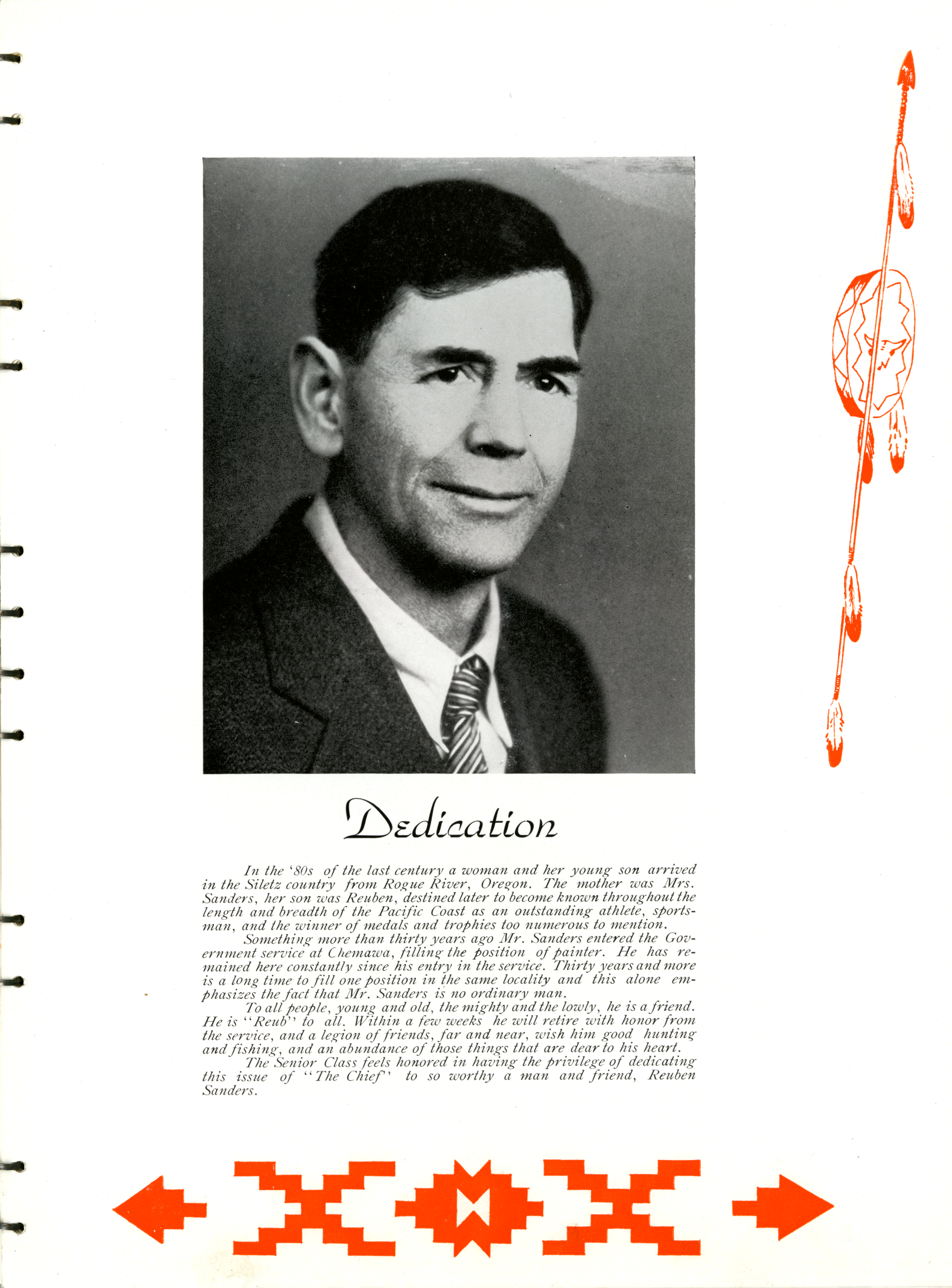Among quarterback recruits for college and professional football, Dan Fouts, a relatively unknown high school player that no other team wanted, was an unlikely choice. Yet during his career, from 1970 through 1987, the 6’3”, 204-pound Fouts set longstanding records for the University of Oregon and the San Diego Chargers, helped give the teams winning seasons, and changed football from a ground to a passing game—an aerial extravaganza that he directed. His ability to take punishment and still play at a high level was legendary.
Daniel Francis Fouts was born in San Francisco on June 10, 1951. His father was Bob Fouts, a Radio Hall of Fame broadcaster in the Bay Area and the voice of the San Francisco 49ers. Growing up, Dan was immersed in the game and was around quarterbacks such as Y.A. Tittle and Johnny Unitas. He was the ball boy for the 49ers and kept statistics for his father in the broadcast booth. Fouts attended Marin Catholic High School, north of San Francisco, and started for the varsity football team in his sophomore year. He transferred to St. Ignatius College Preparatory in San Francisco for his last two years of high school and was somewhat of an unknown when he accepted a scholarship to play for the Ducks at the University of Oregon.
During his three years as a Duck (1970-1972), Fouts blossomed into one of the nation’s top passers, setting 19 school records, including 482 passes and 37 touchdowns for 5,995 yards. In his first year at the University of Oregon, he engineered the greatest fourth-quarter comeback in the university’s football history. After he was put in as a substitute for Tom Blanchard, Fouts electrified the game by throwing three straight touchdowns to the great Bobby Moore (who later changed his name to Ahmad Rashad). His team rallied from a 40-21 deficit to a 41-40 win over the UCLA Bruins. Fouts graduated from the University of Oregon with a degree in political science in 1977.
A third-round draft choice by the San Diego Chargers in 1973, Fouts set records in the American Football Conference. Under him, the Chargers returned as one of professional football’s great offensive teams, with Fouts as quarterback holding the all-time passing record from 1987 until 2016. He was only the third quarterback in National Football League history to pass for 40,000 yards and the first to throw over 4,000 yards in three back-to-back seasons (1979-1982). Fouts’s career high of 4,802 passing yards in 1981 set an NFL record, and he is ranked fourteenth on the NFL all-time passing yard list.
Fouts played his entire fifteen-year professional career with San Diego (1973-1987). He started in 171 out of 181 games, threw 3,297 completions for 43,040 yards and 254 touchdowns, and completed passes for 300 yards or more in 51 games. He had seven career 400-yard games, 476 yards rushing, and 13 touchdowns. The Chargers were the first team to throw more often than they ran: 541 pass plays versus 481 on the ground. Fouts left the Chargers with 42 team and seven NFL records and played in six Pro Bowls. Although he was a prolific passer, he was not able to get the Chargers to a Super Bowl. He led San Diego to two AFC title games but lost both. He was not a mobile quarterback, and his deep passing game led to many hits.
Fouts’s number 14 is one of only four numbers retired by the San Diego Chargers. He was American Football Conference Player of the Year (1979 and 1982), NFL Most Valuable Player (1982), and NFL Offensive Player of the Year (1982). He was inducted into Breitbard Hall of Fame in 1989 and the Oregon Sports Hall of Fame in 1992 and was elected to the Pro Football Hall of Fame in 1993, his first year of eligibility. Fans selected him as the Greatest Charger of All Time in 2009.
When Fouts hung up his cleats, he went into broadcasting. He appeared on ABC’s Monday Night Football, was a college football analyst and sports anchor for KPIX-TV in San Francisco, and was an NFL play-by-play and color commentator on CBS from 2008 to 2020.
Fouts is married to Jeri Martin and lives in Sisters. He advises the Dominic Fouts Memorial Cancer Fund in honor of son Dominic (1978-2012).
-
![]()
Dan Fouts.
Courtesy University of Oregon
Related Entries
-
![Fred Milton (1948-2011)]()
Fred Milton (1948-2011)
During a period of social and racial turmoil in the late 1960s, the Bla…
-
![John Joseph Harrington (1978-)]()
John Joseph Harrington (1978-)
The list of great quarterbacks at the University of Oregon runs deep an…
-
Neil Lomax (1959-)
Neil Lomax was the unlikeliest football superstar, a decent passer on a…
-
![Reuben C. Sanders (1876–1957)]()
Reuben C. Sanders (1876–1957)
Reuben “Reub” C. Sanders was one of Oregon’s greatest all-around athlet…
Map This on the Oregon History WayFinder
The Oregon History Wayfinder is an interactive map that identifies significant places, people, and events in Oregon history.
Further Reading
Cacciole, Scott. "The NFL's Mount Passmore." The Wall Street Journal, December 13, 2011.
Coffin, Phil. "Dan Fouts, the Man before Brees and Marino." New York Times, December 28, 2011.
Elderkin, Phil. "Chargers, in Passing, Write a Book." The Christian Science Monitor, September 16, 1980.
Gehlken, Michael. "No. 7: Dan Fouts a San Diego Mainstay." The San Diego Union-Tribune, November 6, 2016.
Hiestand, Michael. "Fouts, Sapp Deepen CBS's Analyst Bench." USA Today, August 8, 2008.





